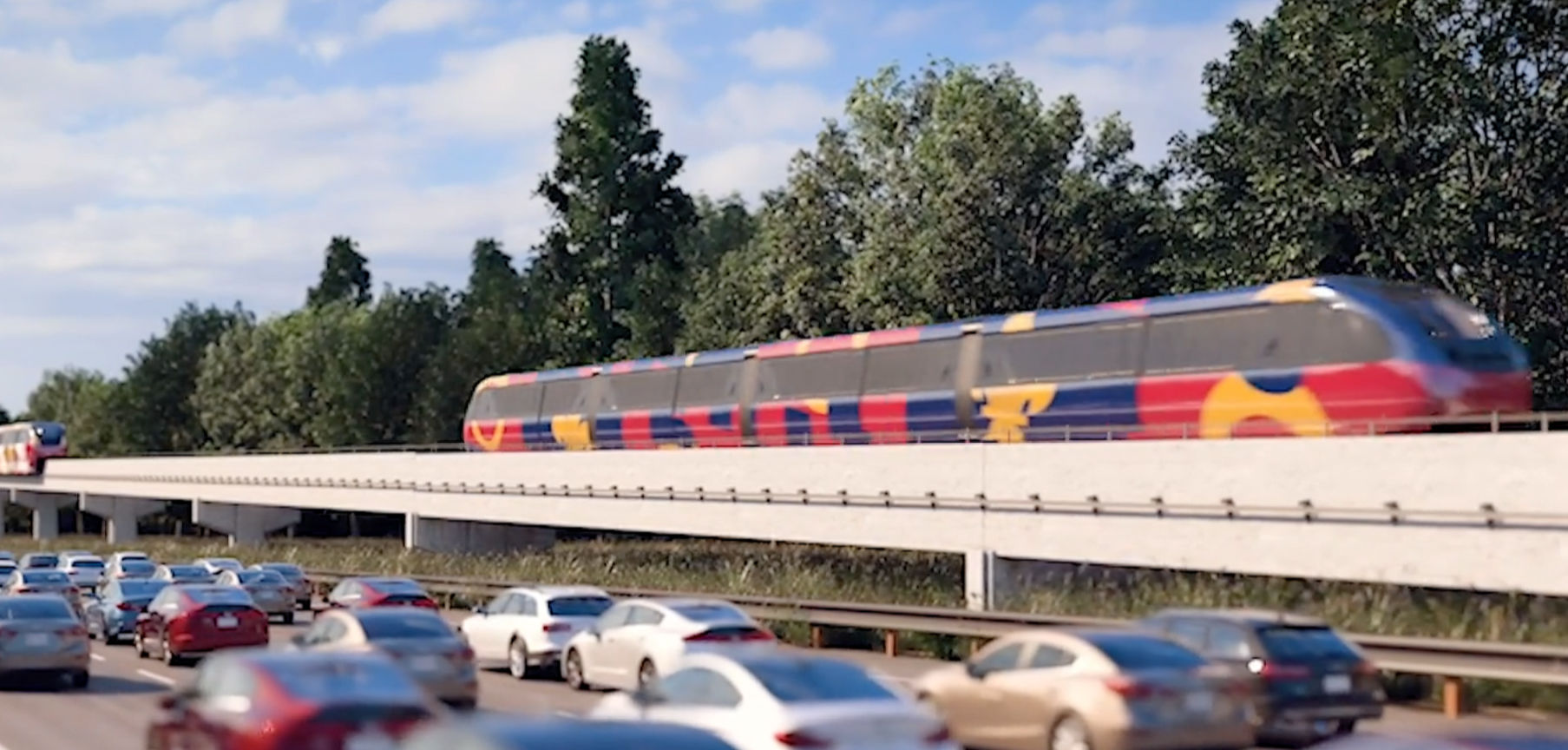
As Maryland tries to decide how to cut down congestion on Interstate 270 between the Shady Grove Metro station and Frederick, a proposed monorail system is getting a serious look.
“It is one of the most reliable transportation modes historically, internationally,” said Robert Eisinger, president of the High Road Foundation.
Eisinger, a D.C.-area developer, said he proposed the plan because he thinks it will move more people than additional highway lanes. And he said it would get people to ditch their cars as population numbers continue to grow outside of D.C.
“Monorail carries more passengers, about 40,000, which is equal to a regular Metro system,” Eisinger said.
At a community meeting about traffic congestion on the northern section of I-270, a panel was presented by state officials to educate those in attendance about the program.
According to the state, a feasibility study of the monorail will be conducted, and if the project is deemed feasible it will be studied as an alternative for easing congestion in the corridor.
Eisinger said he is encouraged that some state and local officials are taking notice of the proposal.
“I feel actually very good about it currently, I think by spring we should have a pretty good indication of whether this has got a chance to be constructed,” Eisinger said.
Among the area leaders taking a close look at the program is Montgomery County Council Vice President Sidney Katz.
“I’m intrigued by this monorail,” Katz said at the community meeting about solving the congestion.
The project would be run as part of a public-private partnership or P3, Eisinger said. As the plan is being examined by the state, Eisinger said he is speaking with an international company which has shown interest in getting involved with the program.
One of the benefits of the monorail, according to Eisinger, is that it’s a “cookie cutter” construction project with a price tag that can be determined with 90% accuracy. The price tag is around $127 million per mile for the 22-mile stretch, and would have a final cost he said would be much lower than extending Metro north.
Eisinger said he is also reaching out to developers near where the six proposed stops would be to see if they might be willing to pay for the construction of the stations, which Eisinger believes would dramatically lower cost of construction.
He said the price is less for a monorail system because it is a raised system which can be built on land where the state has right to build. It would also be less disruptive during the construction process, he said.
“The entire system is constructed off-site and then it’s erected,” Eisinger said, adding that usually, “it’s done at night.”
According to Eisinger, studies also show the system would be able to pay for itself and even bring in some extra revenue. Fares for the system would be comparable to what commuters pay to take Metro.
Katz said he has spoken with Eisinger about the monorail and feels one of its benefits is that it can be built taller and lower, which helps with getting past typical construction hurdles.
“It’s a win-win,” Katz said.
Katz said many people who travel from Frederick already pay for parking, so taking a monorail would be cheaper.
Some residents seemed to like the idea of bringing the system to the D.C. area.
“If there was a monorail that connected to Shady Grove, I would use that,” Frederick resident Sharon Edelstein said.
But it wasn’t all aboard the monorail for residents gathered at the community meeting.
“I think it’s too expensive, and I don’t think it’s gonna carry enough capacity, to make a dent in anything,” said Gaithersburg resident Jay Maxwell.








